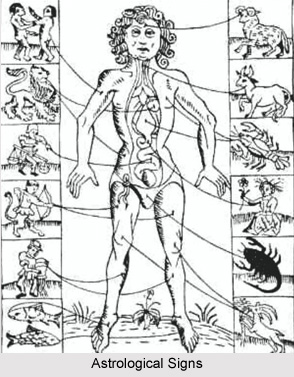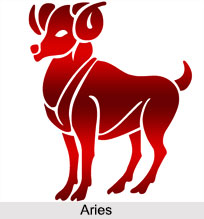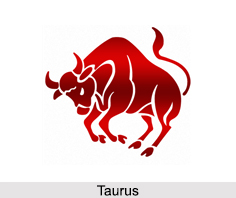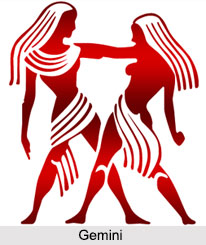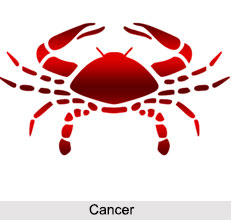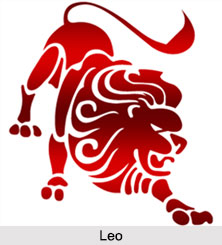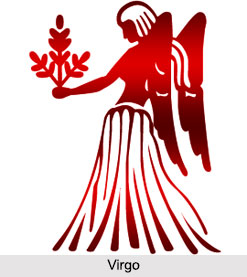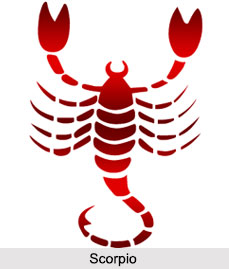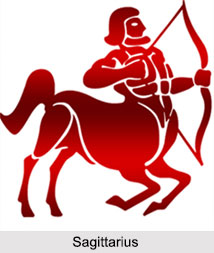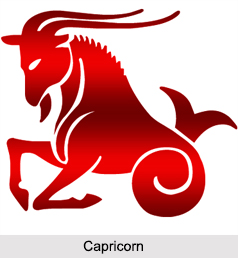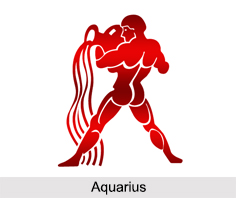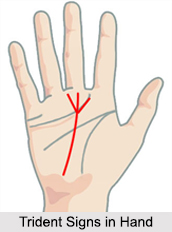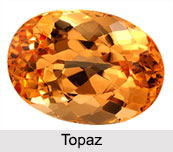 Topaz is a valuable gemstone. Topaz typically occurs in cavities in rhyolites and granite. It also occurs in pegmatite dikes, and in high-temperature veins with cassiterite and tourmaline. The stone is transparent with a vitreous lustre. Topaz looks beautiful in rings, bracelets, necklaces and pendants.
Topaz is a valuable gemstone. Topaz typically occurs in cavities in rhyolites and granite. It also occurs in pegmatite dikes, and in high-temperature veins with cassiterite and tourmaline. The stone is transparent with a vitreous lustre. Topaz looks beautiful in rings, bracelets, necklaces and pendants.
Topaz along with citrine is birthstones of Scorpio. The time ranges from Oct 24 - Nov 21. Topaz is the anniversary gemstone for the 4th and 19th year of marriage.
Origin of Topaz
Topaz has a history that goes back at least two thousand years. The use of topaz goes back to Egyptian times when the ancient Egyptians believed that yellow topaz received its golden hue from the Sun God, "Ra".
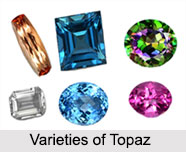 The name "Topaz" is derived from the Sanskrit word "tapas" meaning fire. According to another theory, "Topaz" derives its name from the Island of Topazos in the Red Sea, where the Romans obtained a stone, which they called by this name. It is believed that the topaz of modern mineralogists was unknown to the ancients and that the stone called topazos was the mineral chrysolite or Peridot.
The name "Topaz" is derived from the Sanskrit word "tapas" meaning fire. According to another theory, "Topaz" derives its name from the Island of Topazos in the Red Sea, where the Romans obtained a stone, which they called by this name. It is believed that the topaz of modern mineralogists was unknown to the ancients and that the stone called topazos was the mineral chrysolite or Peridot.
Appearance of Topaz
Topaz appears quite identical to Yellow Sapphire or Pokhraj. Initially a topaz gemstone is colourless but exhibits different colours when a different quantity of impurities is being added in the gemstone.
Colour of Topaz
Pure topaz is colourless, but it also occurs in a broad range of colours. The range started from yellow, blue, pink, peach, gold, green, red, and brown. Some natural yellow stones are heated to become permanently pink i.e. pinked topaz. Topaz with a natural blue colour is very rare.
Varieties of Topaz
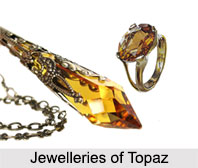 There are some varieties of Topaz and nothing compares to the sparkling brilliance of Blue Topaz. Orange-red "Imperial Topaz" is also rare. Precious topaz is most often found in a scissors cut, a rectangular gem cut with curved sides that has triangular facets. Ovals, cushions, and emerald cuts are also available. Multicoloured Topaz with a rainbow-like colour effect is known as "Mystic Topaz". Pure topaz when brilliantly cut, they are mistaken even for diamond.
There are some varieties of Topaz and nothing compares to the sparkling brilliance of Blue Topaz. Orange-red "Imperial Topaz" is also rare. Precious topaz is most often found in a scissors cut, a rectangular gem cut with curved sides that has triangular facets. Ovals, cushions, and emerald cuts are also available. Multicoloured Topaz with a rainbow-like colour effect is known as "Mystic Topaz". Pure topaz when brilliantly cut, they are mistaken even for diamond.
Blue Topaz is available in a variety of shades, sizes and shapes. Red and intense pink are the most rare and most desirable colours for topaz as well. In 1750 a Parisian jeweller discovered that the yellow Brazilian topaz becomes pink on exposure to a moderate heat, and this treatment has since been extensively applied, so that nearly all the pink topaz occurring in jewellery has been heat-treated. Such burnt topaz is often known as "Brazilian Ruby", as is the very rare, natural red topaz.
Benefits of Topaz
Topaz is a stone of strength. Topaz stimulates an endocrine system. It assists in general tissue regeneration. Topaz is valuable in the treatment of haemorrhages. It also increases poor appetite and helps fighting blood disorders.
In mysticism, the topaz is attributed with a cooling, styptic and appetizing effect. It is said to dispel sadness, anger and nocturnal fears, to warn its wearer of poisons and protect him or her from sudden death.
